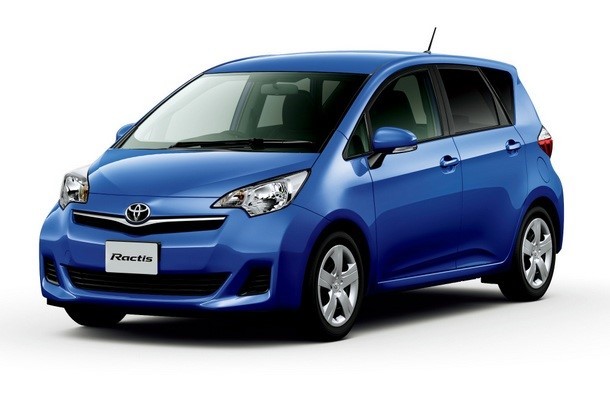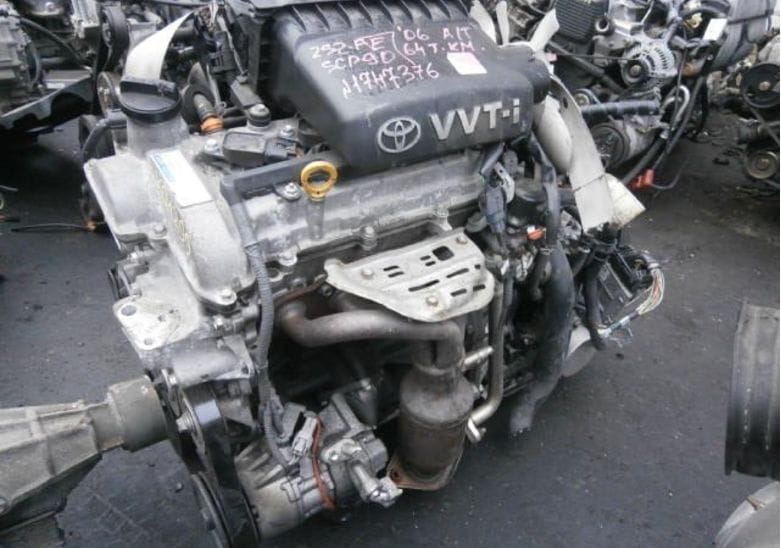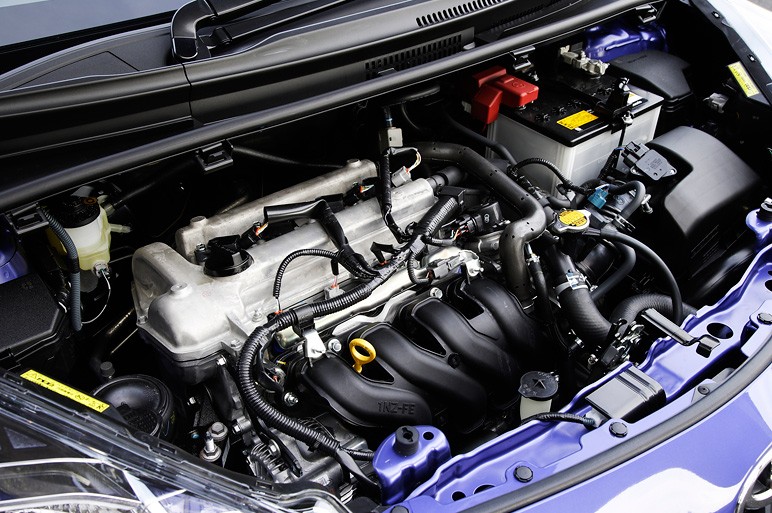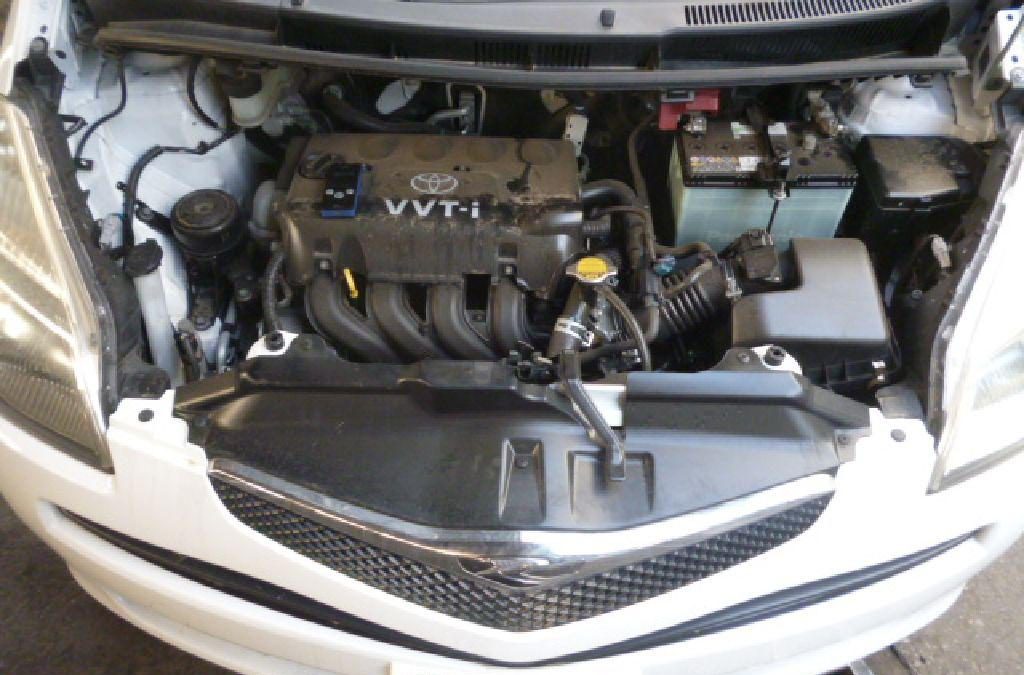
Toyota Ractis engines
Content
In the global automotive market, cars assembled at the plants of the Japanese automotive corporation Toyota Motor Corporation are very popular, which now offers potential buyers more than 70 models of a wide variety of passenger cars equipped with engines of its own design. Among this variety, a special place is occupied by compact cars of the “Small MPV” class (subcompact van), the production of which the company began after it demonstrated the first such car at motor shows in Tokyo and Frankfurt am Main in 1997.
It was this model, built on the Yaris platform, that marked the beginning of a whole series of similar models, which included:
- Toyota Fun Сargo (1997, 1990);
- Toyota Yaris Verso (2000);
- Toyona Yaris T Sport (2000);
- Toyota Yaris D-4D (2002);
- Toyota Corolla (2005, 2010);
- Toyota Yaris Verso-S (2011).
Toyota Ractis. Excursion into history
The creation of the Toyota Ractis subcompact van was caused by the need to replace the Toyota Yaris Verso, which was not popular in Europe. This model was built on a more advanced NCP60 platform and was equipped with 2SZ-FE (1300 cc, 87 hp) and 1NZ-FE (1500 cc, 105 or 110 hp) engines.

At the same time, front-wheel drive cars were aggregated with Super CVT-i CVTs, and all-wheel drive cars were aggregated with four-speed Super ECT automatic transmissions.
The first generation of Toyota Ractis was right-hand drive and was only supplied to the domestic market of Japan, as well as to Hong Kong, Singapore and Macau. Convinced of the competitiveness of the new car, the company's management decided first to carry out restyling (2007), and then to develop its second generation (2010).
The second generation of the Toyota Ractis subcompact van was supplied not only to the Far East market, but also to European and American countries.
The basic version of the car is currently equipped with gasoline engines with a capacity of about 99 hp. (1300 cc) or 105 ... 110 hp (1500 cc), and not only front- and all-wheel drive models can be aggregated last.
Toyota Ractis engines
The Toyota Ractis subcompact van has been produced in various modifications for more than 10 years. During this time, the car was equipped with both gasoline and diesel power units with a cylinder capacity of:
- 1,3 l - gasoline: 2SZ-FE (2005 ... 2010), 1NR-FE (2010 ... 2014), 1NR-FKE (2014 ...);
- 1,4 l - diesel 1ND-TV (2010 ...);
- 1,5 l - gasoline 1NZ-FE (2005 ...).

Automotive engines assembled at the factories of Toyota Motor Corporation are distinguished by high quality workmanship and operational reliability. Suffice it to say that, according to Russian experts, even the most unsuccessful Toyota engine is much more reliable than most domestic engines. This fully applies to the power units, which at different times were used to aggregate the Toyota Ractis car.
Gasoline engines
All gasoline engines installed on cars of the Toyota Ractis lineup, with the exception of the 2SZ-FE power unit, belong to the third generation of Japanese engines, which differ in the use of:
- disposable (non-repairable) light-alloy lined cylinder blocks;
- "smart" valve timing control system type VVT-i;
- gas distribution mechanism (timing) with a chain drive;
- ETCS electronic throttle control systems.

In addition, all gasoline engines that were equipped with Toyota Raktis cars are also characterized by high efficiency. Low fuel consumption in all engine operating modes is ensured by:
- the use of an electronic fuel injection system (the letter E in the engine designation);
- the optimal duration of opening the intake and exhaust valves of the timing (the letter F in the engine designation).
Motor 2SZ-FE
The 2SZ-FE engine is a kind of hybrid of the second and third waves of power units being developed at that time by the designers of Toyota Motor Corporation. In this motor, they managed to retain the features of earlier designs, a characteristic feature of which was cast-iron cylinder blocks. Such cylinder blocks had sufficient margins of strength and materials to ensure, if necessary, a full overhaul of the power unit.
In addition, the excess heat resulting from the long stroke of the pistons was effectively absorbed by the massive cylinder block housing, which helped to maintain the optimal thermal regime of the engine as a whole.
Among the shortcomings of the 2SZ-FE motor, experts note the unsuccessful timing design, which is associated with:
- the presence of two chain dampers;
- increased sensitivity of the chain tensioner to the quality of the oil;
- jumping of the Morse lamellar chain along the pulleys at the slightest weakening of it, which in turn leads to contact (impact) of the pistons and valves during operation and failure of the latter.
In addition, special lugs on the cylinder block housing are used to fasten attachments, which somewhat complicates the use of unified equipment.

NR and NZ series motors
In different years, 1NR-FE or 1NR-FKE engines with a cylinder capacity of 1,3 liters were installed on cars of the Toyota Ractis model range in different years. Each of them is equipped with a DOHC timing belt (2 camshafts and 4 valves per cylinder) and original automotive systems:
- Stop & Start, which allows you to automatically stop the engine, then, if necessary, start it again. Such a system allows you to save from 5 to 10% of fuel when operating a car in a metropolis;
- type Dual VVT-i (1NR-FE) or VVT-iE (1NR-FKE), which allows you to automatically change the valve timing.
The 1NR-FE power unit is the most common NR series engine. It was designed using the most advanced Toyota engineering technology of the time. The key element of this engine is the design of its pistons, the rubbing surface of which consists of carbon ceramides.

Their use allowed to reduce the geometric dimensions and weight of each piston.
The more powerful 1NR-FKE engine, developed in 2014, differs from its predecessor in that it uses the Atkinson economic cycle (the first 2 strokes are shorter than the 2 others) and has a higher compression ratio.
Technical parameters of Toyota Ractis engines with a cylinder capacity of 1,3 liters.

The 1NZ-FE engine is a classic design of a power unit with a cylinder capacity of 1,5 liters. Its cylinder block is made of aluminum and is equipped with:
- twin-shaft timing type DOHC (4 valves per cylinder);
- improved (2nd generation) variable valve timing system.
All this allows the motor to develop power up to 110 hp.
Technical parameters of the 1NZ-FE 1,5 liter motor.

Diesel engine 1ND-TV
The 1ND-TV engine is considered one of the best small diesel engines in the world. It is practically devoid of design flaws and at the same time it is easy to repair. It belongs to the third wave of power units developed by the engineers of Toyota Motor Corporation in the second half of the 90s of the last century.
The 1ND-TV engine was based on a sleeved cylinder block with an open cooling jacket, made of light alloy materials. This engine is equipped with a VGT turbine and a gas distribution mechanism of the SOHC type with two valves per cylinder.
Initially, the engine was equipped with a Common Rail direct fuel injection system with simple and reliable Bosch injectors.
This solution made it possible to save the engine from a number of problems characteristic of diesel power units. However, later (2005) Bosch injectors were replaced with more modern Denso, and even later - with piezoelectric type injectors. In addition, in 2008, a diesel particulate filter was installed on the engine. Unfortunately, all these innovations have had a negative impact on the reliability and durability of this power unit.
Technical parameters of the motor 1ND-TV 1,4 l.


